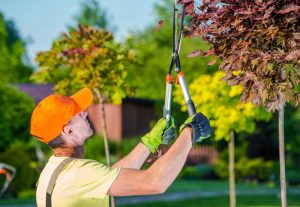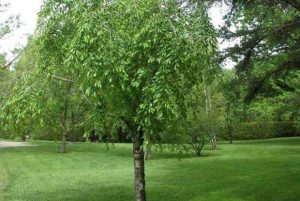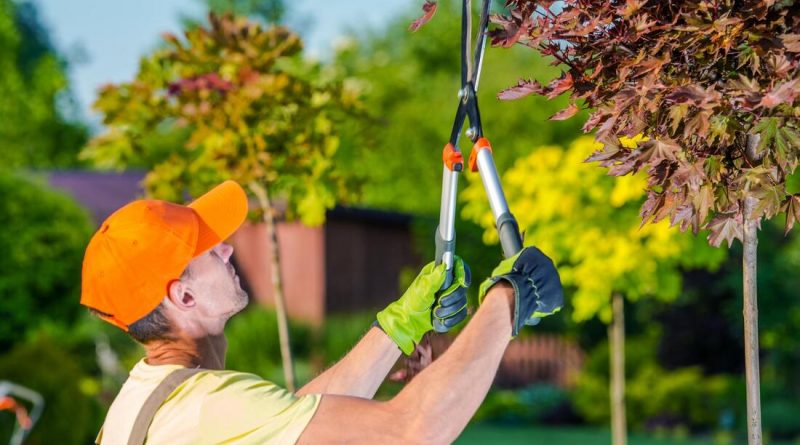What’s the Difference Between Pruning and Trimming?
 Pruning and trimming are two techniques homeowners regularly require when taking care of their gardens.
Pruning and trimming are two techniques homeowners regularly require when taking care of their gardens.
The whole purpose of trimming and pruning is to cultivate healthy and aesthetically appealing trees, shrubs, and hedges.
Tree trimming usually applies to the maintenance of small shrubs or hedges, while pruning applies to both shrubs and trees.
However, not only do pruning and trimming utilize different types of equipment – but they also have different times for implementation.
Contents
Pruning Trees
Pruning is not meant to stunt growth but, instead, stimulate the tree into healthy growth.
Pruning loose and dead branches allow the tree’s flowers and fruits to flourish.
 Equally, it gets rid of diseases and pest-infested branches while at the same time eliminating the chances of them dropping to the ground.
Equally, it gets rid of diseases and pest-infested branches while at the same time eliminating the chances of them dropping to the ground.
The idea behind pruning is to prevent these loose or dead branches from causing harm to other plants, the property surrounding the tree, as well as anyone who might come into close proximity to it.
Two forms of pruning are used, namely pollarding and topiary.
Pollarding involves the removal of the upper branches of a tree, promoting the growth of dense foliage and branches.
Topiary, on the other hand, is the art of shaping trees into animal or geometric shapes.
Tree Trimming
Trimming applies to cleaning up and improving the overall appearance of small shrubs and hedges. This is usually done by removing overgrown branches.
While pruning focuses on safety in a tree’s health, arborists and tree surgeons usually trim shrubs and hedges for aesthetic purposes.
Excessive overgrowth is harmful since it reduces the amount of moisture and light a shrub receives. You should trim a shrub at least twice per year.
When is The Best Time To Prune Trees?
Pruning will depend on the type of plant, its growth habit, bloom time, and condition.
 When it comes to planting new trees, consider that regular inspections and pruning may be required throughout the natural course of its lifetime.
When it comes to planting new trees, consider that regular inspections and pruning may be required throughout the natural course of its lifetime.
And never put off pruning till later when you have large limbs hanging around which are more prone to disease and cause more damage when they drop.
For most people though, trimming is considered best between late fall and early spring. However, your location may also play a role in your decision. Here are plant types to consider.
Young trees
For a young tree to reach its maximum potential, proper pruning is essential. Correct trimming and pruning will lead to less tree maintenance over time as it will experience healthy growth. Be sure to get advice from an arborist near you regarding your specific type of tree and the recommended type and amount of pruning required.
Flowering trees
Regular and routine pruning of dead branches can be done at any time that suits you. However, some flowering trees should be pruned after blooming as they have special needs, so be sure to consult your local arborist.
Deciduous trees
Deciduous trees are giant flowering plants that shed their leaves. Most should be pruned in the late fall to winter, but your local tree surgeon will be able to make a clear identification as well as a pruning schedule.
Subtropic trees
Subtropical plants are selected for their tropical appeal and hardiness. They are able to endure blazing heat and humidity. This makes them perfect in areas with either heavy rains or long periods of drought. With these types of trees, you can literally prune large limbs daily or weekly.
Do not attempt to chop the tops off trees to reduce their size as a substitute for proper tree pruning.
How To Choose The Right Tree Surgeon
Finding a reliable tree surgeon with the right type of knowledge might be tricky. Obviously, your tree surgeon should also have in-depth knowledge of the different tree and plant species around your property and your regional location. Each species of tree and plant requires unique care.
 Of equal importance is their knowledge surrounding your local environmental laws, so be sure to ask questions when they come out to inspect your tree.
Of equal importance is their knowledge surrounding your local environmental laws, so be sure to ask questions when they come out to inspect your tree.
The most important thing to remember, however, is to shop around. Don’t just go with the first tree surgeon to quote you.
Also, punctuality is key for any tradesmen and if you don’t receive a call back within 24 hours of making contact, move on to the next one. You should always compare rates and discuss your options with any team of contractors working on your property before any work commences.
Insurance is another critical requirement of any tree surgeon. You have to be presented with current public liability insurance or run the risk of heavy penalties, not to mention liability if someone is injured on your property.

